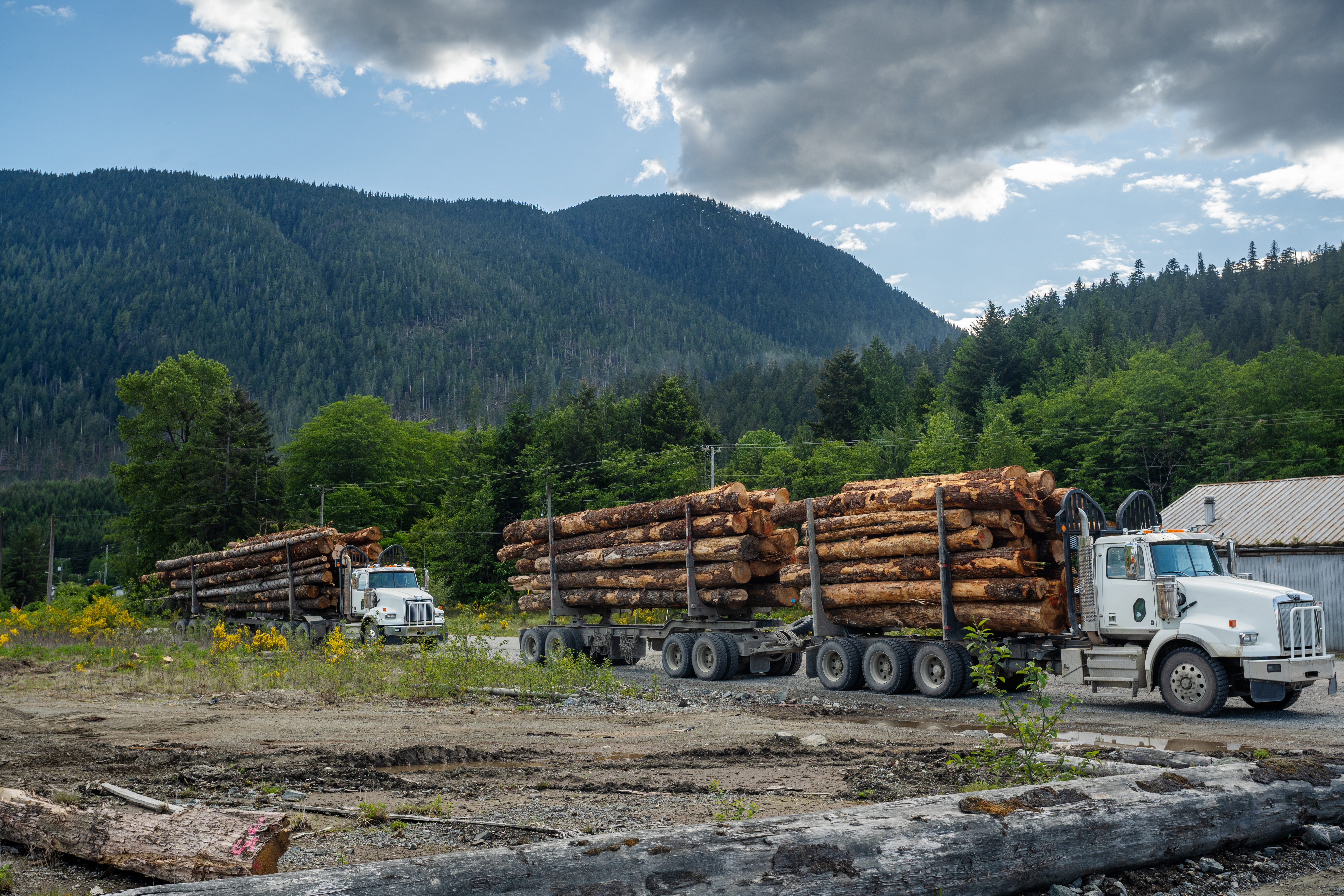Job Satisfaction in the Logging Industry
Posted on by

Operating heavy machinery, working long hours, and hitting the road before sunrise and returning after sunset are occupational pressures that loggers and log truck drivers face. These conditions also put them at high risk for injury and fatality.
Researchers in the University of Washington Pacific Northwest Agricultural Safety and Health Center surveyed 45 loggers and log truck drivers in Washington, Oregon, and Idaho about stress, fatigue, job pressures, hours of sleep and work, and job supports. Researchers also interviewed nine logging workers to learn about their experiences and needs in their own words. The goal of this work was to learn how to best support logging worker wellbeing.

Findings from the survey revealed that while logging workers report high job pressures and long work hours, they also report very high job support, very good physical health and quality of life, and low stress, indicating high job satisfaction. Interviews allowed for more in-depth exploration of these findings, and three key themes emerged from the interviews to provide context for how to support the wellbeing of logging workers.
1. Independence and autonomy are highly valued.
Logging workers are happy in their roles, expressing pride in the work that they do and appreciation for the often solitary and autonomous nature of the work. Among those surveyed, 64% reported very good or excellent quality of life. The importance of personal freedom and job flexibility was echoed in the interviews. One log truck driver shared, “I like just the freedom of being able to line out my own day, do what I want during the day, and haul logs for who I want to a certain extent. Just being independent. I don’t have a boss.” When asked what he appreciated about his job, another log truck driver shared, “…I just enjoy the work, and I enjoyed the physical and mental challenge of my job as the boss…it’s just a tremendous sense of pride. At the end of the day, you can turn your back and turn around and look and see what you did that day and see the forest that you actually made healthier, as opposed to sitting in an office…”
2. High pace of work is driven by both cultural norms and outside policies.
Ninety-four percent of respondents reported their pace of work is somewhat or very high, with the average workday over 11 hours. When asked who pressures them to work longer or faster, 80% reported “self-pressure”: one log truck driver revealed in an interview how cultural norms of autonomy and toughness drive workers to work long days: “I think a lot of it is pride. We have a false pride, a good pride, and a bad pride, but that would be kind of, ‘I’m going to keep up and I’m going to be the tough guy’, and that kind of thing… And that would be a big motivator. And then not being a failure or trying to not so much impress your employer, but to show them that you’re doing your best…that would be the good side of it.” Multiple respondents also described how operating hours at mills and landowner motivation to maximize profit also drive workers to push themselves to the point of fatigue. One industry representative shared that due to mills’ early operating hours, drivers are motivated to rise earlier in order to spend less time waiting in line, maximizing their time on the road to deliver more loads.
3. Lack of recognition by the public negatively impacts worker safety.
Interviewees highlighted how the general public’s lack of awareness of log trucks puts everyone on the road at risk. One log truck driver described, “I think that driver awareness— the general public that’s on the road that’s not familiar with commercial vehicles, there needs to be some way to let those people know that they’re in extreme danger when they do some of the things they do and they’re causing a lot of stress for drivers.” Providing public education about how to drive safely around log trucks presents an opportunity to improve road safety. Other respondents shared that public perception of logging as bad for the environment weighs on loggers who feel unappreciated for the work they do and the essential service they provide.
The information learned during this research will help with the development and delivery of safety and health messages to protect loggers and log truck drivers. Knowing that Northwest logging workers value autonomy, the most effective health and safety interventions will come from the logging community as opposed to government or employers. Log truck drivers like their jobs and report high quality of life despite the long hours, high pressures, and elevated risk of injury and fatality. Any proposed interventions should focus on maintaining worker autonomy, flexibility, and job satisfaction.
Marissa Baker, PhD, is a Professor and Industrial Hygiene Program Director at the University of Washington, Department of Environmental and Occupational Health Sciences.
Lily Monsey, works in the University of Washington Department of Environmental and Occupational Health Sciences and is an MPH student in the Department of Health Systems and Population Health.
Jennifer Lincoln, PhD, CSP, is the Associate Director of the NIOSH Office of Agriculture Safety and Health.
Kitty Hendricks, MA, is a Research Health Scientist for the NIOSH Division of Safety Research and the Assistant Coordinator for the NIOSH Agriculture, Forestry and Fishing Program.
See the other blogs in this forestry series:
COFE – The Future of Forest Operations
Perspectives on Forest Operations Safety
The research described here was funded in part by a National Institute for Occupational Safety and Health research grant (RFA-OH-22-002). This blog is part of a series highlighting occupational safety and health in the forestry industry. See the first blog in the series COFE – The Future of Forest Operations.
The Pacific Northwest Agricultural Safety and Health Center is one of 12 NIOSH-funded Centers for Agricultural Safety and Health which address occupational safety and health in the agriculture, forestry, and fishing sector through research, education, and prevention projects.
Posted on by

